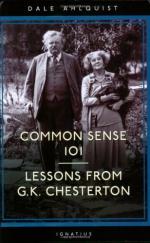|
This section contains 4,885 words (approx. 17 pages at 300 words per page) |

|
SOURCE: “G. K. Chesterton,” in Detective Fiction and Literature: The Figure on the Carpet, St. Martin's Press, 1991, pp. 123–35.
In the following essay, Priestman discusses Chesterton's use of the detective story format to explore theological issues.
As a detective writer, G. K. Chesterton combines several of the concerns of the other writers in this chapter while clearly having many further axes of his own to grind. In his best novel, the early The Man Who Was Thursday (1905), he effortlessly deconstructs the whole notion of detection by showing how an apparently diabolical conspiracy might consist entirely of the quasi-divine detectives bent on exposing it. A similar double insistence on the absolute distinction between good and evil, and on their mirror-like resemblance, runs throughout his work, and helps to explain why he turned so frequently to detective formulae to express theological concerns. The doppelgänger motif is everywhere, corresponding at the...
|
This section contains 4,885 words (approx. 17 pages at 300 words per page) |

|


